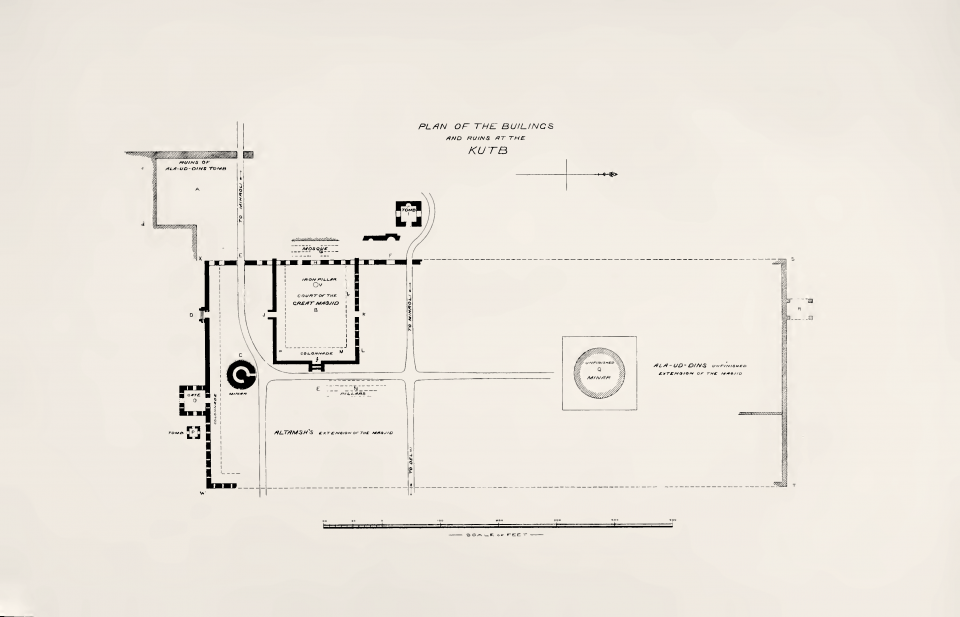REFERRING to Plan No. II. it will be seen that a roadway passes through the central doorway (E) to the village of Mihroli. The view here photographed is taken from a point in the centre of the said roadway, looking towards the village. No traces are left of the rear wall which closed in the back, as the Plan leads me to infer, as it does in the case of the central building of Kutb-ud-din (G), and of the Gate similar to the one here represented and situated to the north (see Photograph XVI.). Like the latter structure, the openings in this range numbered originally five—of which three alone are still to be seen—but the dimensions were the same, and the ornamental treatment and construction precisely similar in each one. On each side of the central opening of this S. W. Gateway and rising above the niches, is a broad band of geometric pattern, unlike in all points the broad scroll-work which exists on the Gateway of the Central Mosque.
The side arches, the curves of which were covered by Arabic inscriptions, measured about thirty-five feet in height, and the central arch was about fifty feet high. When Shams-ud-din's two additional Gates (E and F) were in perfect condition, the whole seventeen arches, which included Kutb-ud-din's central range (H), must have presented a very fine and grand appearance.
The admirable freedom and grace of the ornamental arabesques and inscriptions which cover the whole surface of the stonework are such excellent examples of this style of art, that I speedily selected a small and uninjured portion for reproduction in plaster, and the facsimile of a piece on the left of the centre arch including a portion of the vertical band of inscription and measuring about three feet by two feet, may be seen at the Kensington Museum. It is a good specimen of Pathan ornament of the thirteenth century A.D., its actual date being about A.D. 1229. The general surface is flat and is not strongly marked by any contrasting effects of shadows; but the foliated work and ingenious treatment of the Arabic characters, intermingled with ornament, exhibit the fertile and facile imagination which the original designer was enabled to bring to bear upon the invention of his work.

